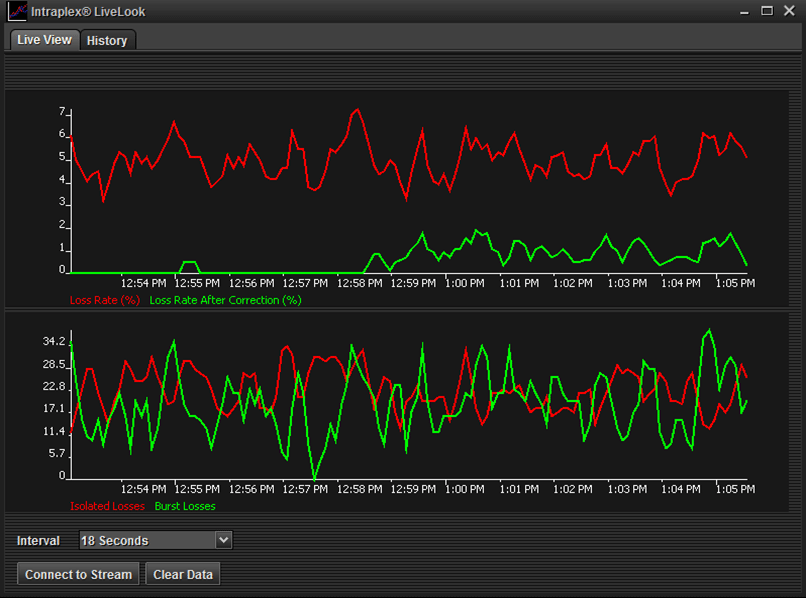smartDASH & smartSCOPE
smartDASH & smartSCOPE

Lawo’s System Monitoring And Realtime Telemetry Dashboard (aka smartDASH) is a vendor-agnostic enterprise software suite designed to provide full network and media visibility across an all-IP, all-SDI or hybrid WAN/LAN broadcast infrastructure. Based on a LINUX OS, this software-defined networking solution incorporates a powerful and robust database to document and rapidly search any aspect of the operation—from a simple cable ID number to seeking the journey of a multicast across a transnational multi-hop WAN.
By leveraging a vast library of software communication protocols, the smartDASH automatically interrogates live and dormant path connections to create the most intuitive and data rich presentation layers of a COTS-hybrid infrastructure, deriving media network data and documenting the network and supporting infrastructure. With its award-winning network micro-services, smartDASH supports a wide range of network protocols to build up rich graphic representations of the network infrastructure. These automated processes dynamically document the interconnected network design in real-time. SmartDASH users have a zero-footprint installation: SMART can be deployed on-prem, in a private or public cloud, and is accessible from a browser and/or mobile device.
smartDASH supports monitoring and decoding for media formats from low-bit-rate OTT/ABR streams to uncompressed ST2110 studio production flows, in addition to characterizing packet pacing off the delivery network. Unifying network telemetry and mixed media flow brings deep operational visibility into a single glass view. smartDASH even tracks device inventory spares and accounts for CAPEX and OPEX KPIs to manage cost of ownership.
Additional information
Related Products:

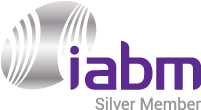

YOUBORA


VPDU

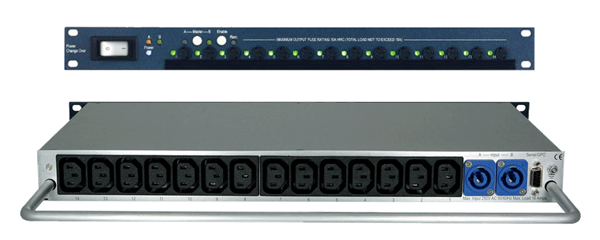
MDU14-CO


InSite


MDU12-PMi




MatchBox Glass



MatchBox Generator


Dymos(TM) Event Driven Monitoring

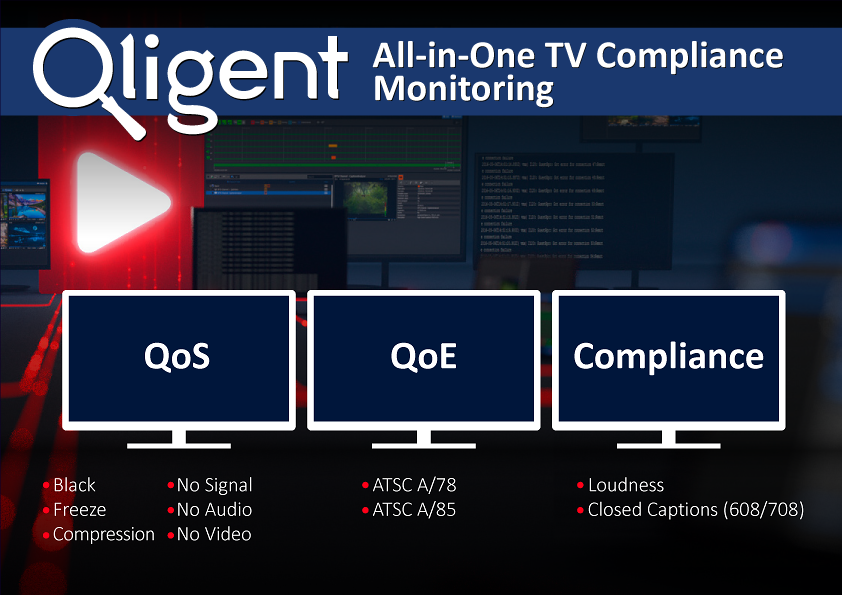
All-in-One Compiance Monitoring


Network 1
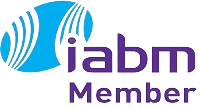

ILLUMINATOR


Monitoring and Control (Satellite related services...


BCi Digital Systems Integration


DataMiner
INTRAPLEX® LIVELOOK
Intraplex LiveLook provides both a real-time analytics as well as a monitoring and notification platform for the IP Link audio codec systems. The analytics capability of LiveLook uses Burst Packet Loss modeling technique to analyze the patterns of packet losses, which is then used by the internal decision tree to provide recommendation on the most effective packet loss mitigation technique of the IP Link to apply.
The monitoring capability can simultaneously collect long-term statistics on multiple audio streams, which can be used for historical analysis. The notification capability creates a separate alarm log for each audio stream and can optionally send email notification to the user on the state of the audio stream.
YOUBORA
YOUBORA gives video providers the comprehensive overview of their end-users’ streaming experience in real time, integrating with players to get the raw data that matters, and translating it into customizable and easily readable dashboards that not only provide businesses with all the data they could need, but also allow them to understand and act upon it in a meaningful way.
The challenge we had was to develop an evolution of our product which could convert extremely complex information into a visual design system intuitive enough to allow clients to identify, create, and stack their own patterns of KPIs, metrics, and dimensions based on the data for their individual service. By working closely with clients and always iterating towards a better version of our product, we were able to create a visual design language simple enough to enable users to obtain the data visibility that they need.
Currently, in version 6, faster and improved analytical capabilities, previously inaccessible mountains of raw data can now be leveraged for a complete range of business needs, from marketing to operations, product, and content departments. At NPAW we strive to provide video platforms with the analytics tools that they need to grow their business. That means we need to be quick, innovative, and forward thinking, always.
YOUBORA is a video intelligence solution that unites video analytics with business intelligence to improve video platforms for both the companies behind them and the people using them.
VPDU
Building on the success of our horizontal PDUs, used by major broadcasters worldwide, TSL Products introduces a range of vertical power distribution units (VDPUs).
Save Space and Money: The new vertical design utilises unique individually fused IEC Connectors to provide the highest density available, allowing you to save valuable rack space. The design also features low energy consumption for a leaner, greener and more space efficient rack room. The new VPDU has dual 32A inlets, with each inlet powering twenty individually fused C13 outlets.
Features:
- Dual 32A inlets, with each inlet powering twenty individually fused C13 outlets.
- High density means the overall unit is only 1767mm.
- Each Outlet is individually fused and has its own status LED.
- A and B Outlets are easily identfiable through the colour coding of status LEDs.
- Easy mounting from rear on sides for extra flexibility and ease of installation.
MDU14-CO
Our Power Management family has been designed to address the challenges faced by systems managers to effectively maintain system viability, control critical power infrastructures – over local or international networks – to meet targets and increase ROI.
Features:
- Dual input seamless auto changeover
- 14 way fused IEC outlets
- Master input setup button with dual tri colour status LEDs
- Input status monitoring GPO on rear D9 connector
- Tri-colour LED input and power indicators
- Rounded cable tie bar
InSite
Facilities are generating ever more data, and although this information is readily available from individual devices, it is cumbersome to access and report on when using numerous manufacturer specific portals. Real-time data is hugely beneficial in the daily running of any facility – minimising down-time and decreasing power consumption - as long as it is accessible from a single point where it can be analysed as a whole, rather than having to access and report from individual manufacturer-specific portals.
InSite is a vendor independent solution that brings all of this information together into a single system using industry standard protocols such as SNMP and Modbus.
It can be hosted on premises or in the cloud and will work with a broad range of third party manufacturer of sensor and data centre equipment - in fact any manufacturer who produces object identifier (OID) information.
DID YOU KNOW? InSite can be configured to provide a protected whole system view for central monitoring and individual subsystem viewer for local system monitoring.
MDU12-PMi
The MDU12-PMi is a Power manager mains distribution unit, 12 way, 16 x GPIs, ethernet output monitoring and alarms – email and SNMP, individually controlled latching relays, sequential & delay power up with current sense network monitoring
Features:
- Remote Ethernet control of 12 separate outputs via secure web browser
- Overall Status page showing individual & total power consumption
- Power Factor Monitoring
- Sequential, immediate or user configured delayed output startup
- Ethernet input power failure alarm
- Internal temperature sensor with SNMP alarm
- Unit and SNMP configuration via secure web browser interface
- Front Panel LAN status LED
- Tri-colour output status LEDs
- Rounded cable tie bar
- Supplied with Powercon Input connector
- Tri-colour front panel using status LEDs for rapid failure identification
- Intuitive Graphic User Interface (GUI) for ease of set-up
- Self contained operation with all software and hardware functions
xFrame
The audio options are on separate cards, which are installed or removed from the front of the device. For the more technically inclined, let’s say you’re on an OB truck and you don’t have any customers that currently require Dolby E encoding, but all of a sudden, you land a job for a client who does. In an inflexible world, this was a problem that could cost business, but with xFrame all you have to do you slot in a Dolby E enabled card from Hitomi and away you go.
xFrame means that that audio options are very easy to change, or add to, a MatchBox Analyser configuration. That’s because xFrame is an extremely high quality, modular platform that has four slots to accommodate what the user needs, as well as the ability to configure the modules to suit preferences once installed. That modular flexibility is a significant win for customers, resellers, and Hitomi as a manufacturer.
FEATURES
- Capacity for 4 MatchBox modules with options for expansions (audio, Dolby etc)
- Hot swapable modules
- Frame Ethernet interface to access each module’s web control interface – no need for an external switch
- Hot swapable redundant external power supplies (Included)
- Frame reference distributed to all modules in the frame
- Increased cooling capability with 3 x replaceable fan units – front to side cooling
- Full chassis monitoring including PSUs, fans, references, Modules status, SFP presence and temperature
MatchBox Module Features
- Integrated with frame’s Ethernet for web control
- Integrated with frame’s Video Reference interface
- Video Reference input
- Each Module can support 4 SFPs (8 video interfaces)
IdentBox
Once you have a perfectly timed test pattern generator, there’s even more that can be done visually to benefit those in the MCR or OB. IndentBox provides a visual cue on a test pattern and confers the ability to test all the visuals and coms before broadcasting to prevent the possibility of live, on air grief.
Text overlaid on a test pattern can be used to indicate what is about to be shown, where, and from what camera. This is extremely useful for those at the other end, where they have loads of feeds coming in. Even for the best and most experienced professionals, even more so with the advent of remote production requirements, it’s easy to get confused. So a visual cue on a test pattern that says exactly what’s in the can is a subtle, but substantial benefit. The content has yet to be captured and broadcast, but to test all the visuals and coms beforehand is invaluable.
Instead of having someone standing in front of a camera to take readings from, IdentBox provides you with a verified, perfect test pattern that in turn enables you to measure and confirm the veracity of your link before you even start sending video or audio signals down it. Knowing that your links are solid is a fundamental parameter of any broadcast, and we make it much easier, many times faster, and with complete reliability.
Test Tones
Audio tones are easily configurable per channel. Just choose GLITS, BLITS, or continuous tones. Tones can also be conveniently generated as encoded Dolby. All tones are precisely generated at 24 bit resolution.
Audio Idents
No need for the time consuming and inflexible pre-recorded sequences; our text to speech synthesis handles it all for you! You can insert phrases onto the audio outputs at regular intervals and create common prefixes with staggered leg ident to identify channels without the idents talking over each other. All of this is configurable via simple text entry through the web interface, and applied within seconds.
Test Patterns
Once you have a IdentBox you will not need another TPG! Whether you want plain bars, sweeps, ramps, pathological, RP219 bars or even High Dynamic Range (HDR BT2111) our flexible TPG will do the job.... and if the pattern you are looking for is not there, we are happy to add patterns for our valued customers.
Text Ident
Designed for clear readability and contrast. Our text ident generation boasts tidy anti-aliased text with a neat outline for clear display against any background. A range of available fonts, sizes and colours get your line identification across.
Logo/Bug Insertion
Customise your source with a logo or other graphic. Logo insertion allows you to upload and place your graphic keyed into the source.
Video Output
Our SFP based interface gives our customers the flexibility to output video in any form they choose; copper, fibre or HDMI. Up to 4 SFP can be fitted to provide 8 test pattern outputs at SD/HD or 3G. These outputs can also be used for quad-link 4k.
2SI Quad-link routing indication
Easily identify faults with the routing of Quad link 2SI video with the on-screen routing indication.
Genlock
Lock the video output to Black&Burst or Tri-Level house references.
Web Interface
Simply type the IP address of your IdentBox into a web browser and set it up! This clear and compact interface can be used on any PC, Mac and touch screen device.
MatchBox Glass
MatchBox Glass is powerful and, like MatchBox Generator, works with MatchBox Analyser to replace the need for human intervention to test audio and video links. MatchBox Glass ensures that whatever is in front of the camera looks and sounds like it should on screen.
Making the measurement is simple and fast. The user holds an iPhone or iPad running the FREE iOS app in front of up to four cameras. At the other end, the MatchBox Analyser, which has four inputs, when enabled with the licence for Glass, can exactly measure video and audio timing differences – if any – across all four cameras.
The remote MatchBox Analyser in the MCR or OB truck looks and listens for a unique flash and audio tone generated onsite by MatchBox Glass and in approximately two seconds returns video and audio alignment and adjustment data that thus vastly accelerates the process of onsite synchronisation. This is especially useful for remote productions because it provides the ability to swiftly and accurately catch any synchronisation issues before they leave the site.
MatchBox Analyser
MatchBox Analyser looks for that fixed test sequence send by MatchBox Generator and calculates the difference between what it knows should be there and what it actually receives and measures enables it to generate a precise reading that indicates the difference between the arrival of the sound and associated vision.
This means that guesswork is replaced by a highly accurate, mechanised generator and receiver that compose and submit their respective signals to the best and most accurate pair of mechanical eyes and ears you could ever imagine, i.e., a machine that knows exactly what should line up, and it if doesn’t.
AV Timing
Audio Video timing is measured to a resolution of 0.1ms with a maximum range of +/- 2 seconds. The MatchBox video signal from the generator is tolerant of almost all processing which does not add movement to the centre area of the picture, including up down cross conversion, frame rate conversion and compression.
Coherence
Coherence is the measure of precise alignment of audio legs with respect to each other. This is especially important with surround sound, where unpleasant comb filtering effects can dramatically distort the frequency response of the system if mistimed audio legs are mixed together. Legs should be kept to within 0.1 audio samples to minimise this effect.
MatchBox measures coherence to a precision of 0.01 samples.
Transport Timing
It is now easy to check the relative timing of SDI video channels against each other and the video reference. The Transport Timing measurement indicates the literal timing of the SDI transport vs another SDI or the reference. This is great to confirm video feeds are genlocked and with the 4K open allows you to instantly confirm that all four feeds of a quadlink program are in line.
Content Timing
What if one of your feeds has perfect transport timing but is a frame delayed? No problem! The MatchBox Analyser also checks the content timing of all the inputs for you.
Levels
Audio level is measured to +/-0.01dBFS, using a true peak algorithm, making sure that your levels are spot on.
Inversion
Has one of your audio legs been inverted through the processing chain? Would you know if it was? With the MatchBox system you will, a simple indication of leg inversion is displayed.
Leg Identification / Channel ordering
Legs crossed? We can tell you that too! A simple display of the tones on each input channel gives immediate indication of what is on which channel... This does what your ears do when listening to BLITS tone but without the listening.
Web Interface
All Analyser values can be read from one page on the web-based control system in a clear and compact format. Status is updated on a second by second basis, so you do not have to wait.
On Screen Display
The MatchBox Analyser passes through the input video and overlays all readings on a simple to understand graphic; again rapidly updating and easy to read. Clear bar graphs give an idea of magnitude of AV errors, with text readout of levels, coherence and source.
MatchBox Generator
Lip-Sync Test Output
Advanced signatures are added to the video and audio output to enable AV timing measurements when the Generator is paired with an Analyser. To learn more about what measurements the signatures allow checkout the MatchBox Analyser. The signatures are carefully crafted to be tolerant of almost all processing including up down cross conversion, frame rate conversion and compression.
Test Tones
Audio tones are easily configurable per channel. Just choose GLITS, BLITS, or continuous tones. Tones can also be conveniently generated as encoded Dolby. All tones are precisely generated at 24 bit resolution.
Audio Indents
No need for the time consuming and inflexible pre-recorded sequences; our text to speech synthesis handles it all for you! You can insert phrases onto the audio outputs at regular intervals and create common prefixes with staggered leg ident to identify channels without the idents talking over each other. All of this is configurable via simple text entry through the web interface, and applied within seconds.
Test Patterns
Once you have a MatchBox generator you will not need another TPG! Whether you want plain bars, sweeps, ramps, pathological, RP219 bars or even High Dynamic Range (HDR BT2111) our flexible TPG will do the job.... and if the pattern you are looking for is not there, we are happy to add patterns for our valued customers.
Text Ident
Designed for clear readability and contrast. Our text ident generation boasts tidy anti-aliased text with a neat outline for clear display against any background. A range of available fonts, sizes and colours get your line identification across.
Logo/Bug Insertion
Customise your source with a logo or other graphic. Logo insertion allows you to upload and place your graphic keyed into the source.
Video Output
Our SFP based interface gives our customers the flexibility to output video in any form they choose; copper, fibre or HDMI. Up to 4 SFP can be fitted to provide 8 test pattern outputs at SD/HD or 3G. These outputs can also be used for quad-link 4k.
2SI Quad-link routing Indication
Easily identify faults with the routing of Quad link 2SI video with the on-screen routing indication.
Genlock
Lock the video output to Black&Burst or Tri-Level house references.
Web Interface
Simply type the IP address of your MatchBox Generator into a web browser and set it up! This clear and compact interface can be used on any PC, Mac and touch screen device.
Dymos(TM) Event Driven Monitoring
Qligent’s Dymos(TM) Monitoring solution packages all of the QoS, QoE and Compliance Monitoring benefits of Qligent’s flagship Vision system for temporary services in the cloud, giving service providers a friendly pricing model and lightweight monitoring infrastructure that turns on and off as needed.
The dynamically-fashioned instance enables the support of events with minimal notice, connecting the service provider’s infrastructure with a Qligent Vision system in the cloud through a secure URL. Customers get the same benefits as 24/7 Vision users, monitoring QoS-related transport and physical streams, QoE-related issues (lack of signal, video freeze, missing audio) and compliance-related matters, such as audio loudness and closed captioning.
The instantly deployable system provides all the same standard Vision components, including aggregation servers and networked probes for gathering performance data across the delivery chain. Measurement and compliance results and recordings are still available for the customer after the event for a defined period of time – with no additional costs associated as the probing cloud instances have been turned off.
All-in-One Compiance Monitoring
Qligent Vision Compliance Monitoring system unlocks a centralized portal to monitor the three pillars of quality of service (QoS), quality of experience (QoE) and compliance in one flexibly priced solution.
Qligent has long offered an enterprise-level Vision solution for large TV networks and distributed service entities, covering a broad array of monitoring and analysis requirements across many locations. Qligent’s new All-In-One Compliance Monitoring system is tailored for the local TV stations and smaller station groups tasked with the same responsibilities, including loudness and closed caption monitoring, at a more modest scale.
Perhaps most unique is the inclusion of QoS and QoE monitoring – two core Qligent competencies that are rarely offered in compliance monitoring systems. While TV stations can now cost-efficiently monitor their own QoS-related transport and physical streams along with QoE-related issues (lack of signal, video freeze, missing audio), the system also allows broadcasters to record and monitor live program streams from in-market TV stations. These powerful capabilities will give broadcasters consistent insight into competitive QoE performance, as well as clear evidence of what local businesses are advertising with those stations.
Qligent will supply all software, common off-the-shelf hardware, and QoS/QoE/compliance toolsets as an instantly deployable system, which removes the cost and integration burden of expensive, proprietary compliance systems. The flexible pricing structure offers monthly or annual fees for the same turnkey solution, which provides consecutive days of 24/7 compliance recording through the contracted period. Options to monetize programming, such as content repurposing, are available for additional fees.
Network 1
Network 1 is a reliable and cost-effective internet-based platform, for the primary distribution of linear content. It offers content owners 24/7/365, point to multi-point channel distribution to global audiences. Network 1 empowers customers to focus on the content, not the distribution.
From public service broadcasters, to global media giants, the UK's oldest commercial network and premier league football teams, Network 1 customers are increasingly utilising global connectivity to transport linear video content.
Network 1 offers significantly quicker implementation than traditional fibre and satellite distribution methods, with set-up normally measured in hours rather than months. Network 1 is multi-cloud compatible, protocol agnostic and delivers over managed or unmanaged networks. Infinite scalability ensures on-boarding new channels is easy and if no hardware is required, customers can deliver to new affiliates or broadcast platform operators straight away.
Network 1 is a fully managed service, with network management and monitoring capabilities, offering complete reliability.
ILLUMINATOR
Information is your greatest asset. ILLUMINATOR gives access to the key data that is vital to your business performance, presented in a way that is easy to visualise and interpret. Users access data through a client customisable control layer, known as a workspace, which sits on top of the core ILLUMINATOR framework. This allows the software to be tailored to exact client’s needs. The workspace provides users access to any data, whether mastered within ILLUMINATOR’S extensible database, or resident externally in other systems.
ILLUMINATOR allows users to view and manage data from legacy or difficult to maintain datasets, in a single environment. It can consume data in many formats reducing the need for multiple, disparate ‘data islands’ often constructed in spreadsheets, Access or bespoke SQL database solutions.
Work Together
In addition to the user defined Workspaces, the ILLUMINATOR core framework facilitates pre-built or custom functional module plugin capability. Existing modules can be adapted, or new and specially tailored modules can be created with Graphical Data’s support, to ensure you get the solution you need. These functional modules are designed to enhance the power of ILLUMINATOR, improving how users view and work with their data, on a daily basis.
All parts of the business can contribute; suppliers, contractors and customers can also engage if required. Each user has their part to play and every team member's input contributes to overall success. ILLUMINATOR’s communication features allow quick, consistent input and feedback to and from all.
Complete Integration
ILLUMINATOR allows multiple processes to come together in a single integrated workflow tool. These can include processes managed in other systems and if unified with Graphical Data’s RESOLVE software - exceptional end to end project performance improvements can be realised. ILLUMINATOR and its comprehensive toolkit are designed to manage large volumes of complex data. This can include systems procured from scratch, the re-structuring of existing databases, or the unification of data mastered elsewhere in multiple discrete repositories to provide a ‘single view of the truth’, ILLUMINATOR can deliver it all. ILLUMINATOR facilitates exceptional levels of software configuration to meet unique/specific data management requirements but can also realise these very rapidly.
Asset management databases and configuration management databases are numerous. However, ILLUMINATOR’s power is that in addition to these standard functions, it can be configured to be capable of much more. This includes integration of very unique data sets not normally managed in broad enterprise level applications.
Monitoring and Control (Satellite related services & applications)
BCi Digital Systems Integration
Comprehensive Systems Integration Support:
Early Stage Consulting
Vendor RFI and RFP Support
Budgeting and Detailed Project Planning
Vendor Selection and Solution Design
System Integration and Test Planning
End-to-End Platform Testing
Operations Transition and Training
DataMiner
DataMiner is the most advanced end-to-end multi-vendor NMS, OSS and orchestration software solutions for the broadcast, satellite, cable, telco and mobile industry. The platform offers a plethora of functions including unlimited web access, alarm monitoring, email and SMS notification, long-term trending, professional reporting, advanced automation, intelligent correlation and root cause analysis, service management, real-time SLA monitoring, user-definable key performance indicator dashboards, spectrum monitoring, mobile access, powerful CPE management, inventory and asset management, and much more. One interface to manage your entire operational ecosystem, across any vendor and technology boundaries, results in a significant reduction of operational expenses and increased quality of service. This award-winning solution is integrated with more than 5500 devices and systems from more than 600 different key industry suppliers. It enables end-to-end integration of the most complex technical ecosystems and has been deployed by leading operators around the world.
More info: www.skyline.be / www.dataminer.co



